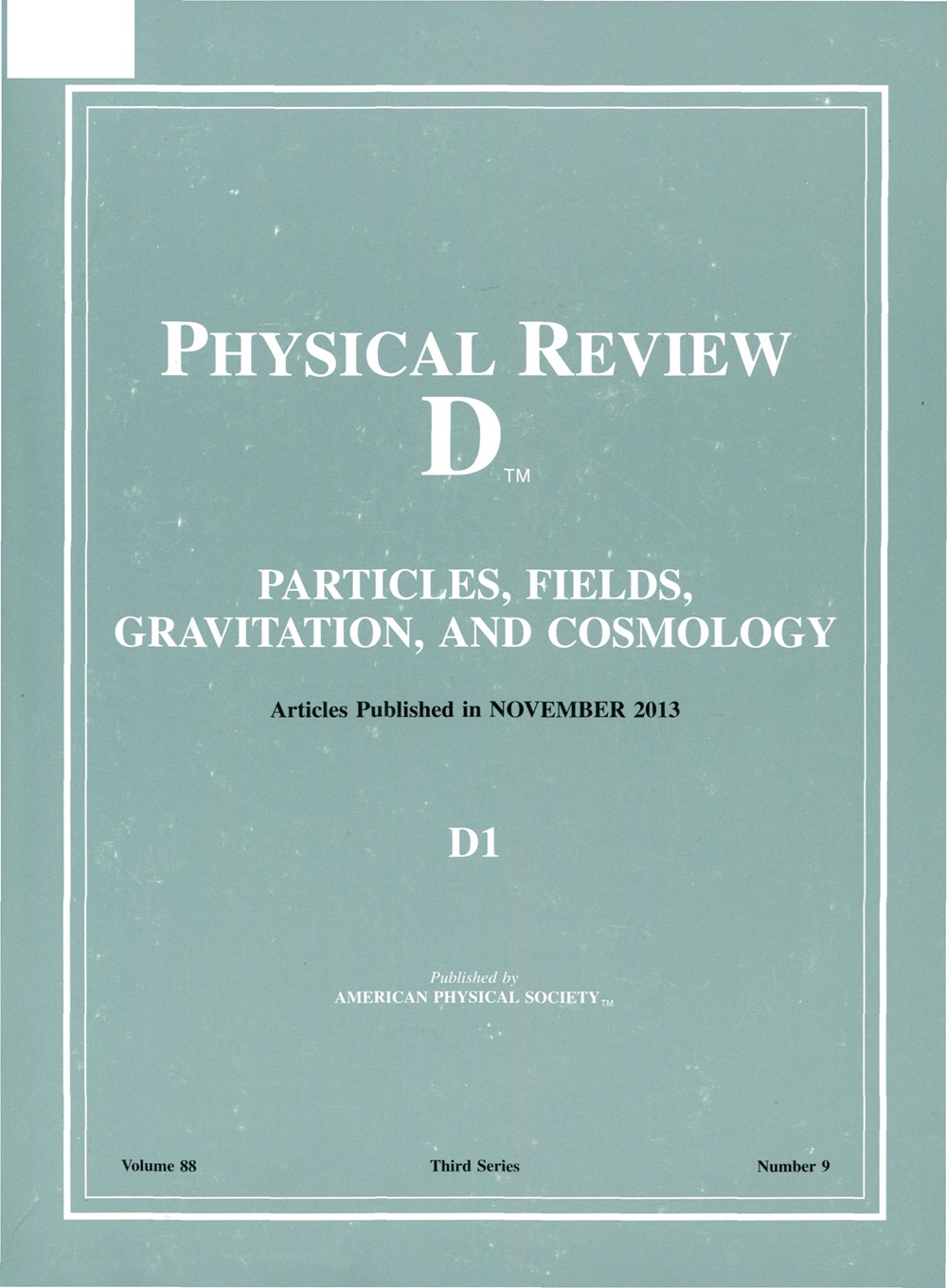用Weizsäcker-Williams方法理解重力形状因子
IF 5.3
2区 物理与天体物理
Q1 Physics and Astronomy
引用次数: 0
摘要
了解核子和原子核的内部结构一直是高能物理学中一个长期感兴趣的话题。引力形式因子(GFFs)为我们探索核子和原子核的能量-动量/质量分布提供了一个重要的入口。本文用Weizsäcker-Williams方法研究了相对论性强子的光子和胶子动量gff,也称为a - gff。首先,我们用电荷形式因子表示光子a - gff,并讨论相应的光子半径。此外,在小x框架下推导了胶子A-GFF与偶极子散射振幅拉普拉斯函数之间的积分关系,使我们能够通过即将到来的电子-离子对撞机的测量来揭示强子内部胶子能量动量分布。此外,我们将分析推广到研究原子核的A-GFF,并提出利用核胶子均方半径和电荷分布来约束大原子核的中子分布。这项工作为高能强子的基本结构提供了一个有趣的视角。2025年由美国物理学会出版本文章由计算机程序翻译,如有差异,请以英文原文为准。
Understanding gravitational form factors with the Weizsäcker-Williams method
Understanding the internal structure of nucleons and nuclei has been a topic of enduring interest in high-energy physics. Gravitational form factors (GFFs) provide an important portal for us to probe the energy-momentum/mass distribution of nucleons and nuclei. This paper presents the study of the photon and gluon momentum GFFs, also known as the A-GFFs, of relativistic hadrons using the Weizsäcker-Williams method. To begin, we express the photon A-GFFs in terms of charge form factors and discuss the corresponding photon radius. Furthermore, an integral relation between the gluon A-GFF and the Laplacian of dipole scattering amplitude is derived in the small-x framework, and it allows us to unravel the gluon energy momentum distribution inside hadrons through measurements at the upcoming Electron-Ion Collider. In addition, we generalize the analysis to study the A-GFF of nuclei and propose employing the nuclear gluon mean square radius, together with the charge distribution, to constrain the neutron distribution for large nuclei. This work provides an interesting perspective into the fundamental structure of high-energy hadrons. Published by the American Physical Society 2025
求助全文
通过发布文献求助,成功后即可免费获取论文全文。
去求助
来源期刊

Physical Review D
物理-天文与天体物理
CiteScore
9.20
自引率
36.00%
发文量
0
审稿时长
2 months
期刊介绍:
Physical Review D (PRD) is a leading journal in elementary particle physics, field theory, gravitation, and cosmology and is one of the top-cited journals in high-energy physics.
PRD covers experimental and theoretical results in all aspects of particle physics, field theory, gravitation and cosmology, including:
Particle physics experiments,
Electroweak interactions,
Strong interactions,
Lattice field theories, lattice QCD,
Beyond the standard model physics,
Phenomenological aspects of field theory, general methods,
Gravity, cosmology, cosmic rays,
Astrophysics and astroparticle physics,
General relativity,
Formal aspects of field theory, field theory in curved space,
String theory, quantum gravity, gauge/gravity duality.
 求助内容:
求助内容: 应助结果提醒方式:
应助结果提醒方式:


